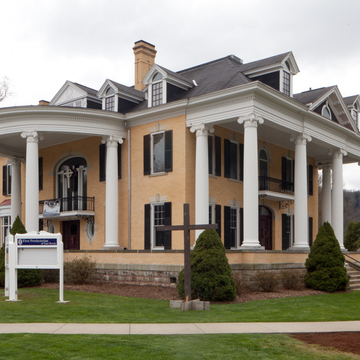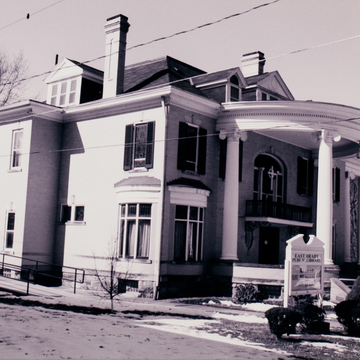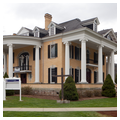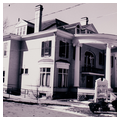You are here
First Presbyterian Church and East Brady Library (Newton E. Graham House)
The Newton E. Graham house in East Brady was built from the plans of George F. Barber published in the 1898 catalog Modern Dwellings (p. 31). Beautifully sited overlooking the Allegheny River, it is, by far, the grandest house in the area, with two-story porticos supported by fluted Ionic columns on the north and west elevations, one semicircular and the other rectangular. In 1927, the Grahams donated the house to the United Presbyterian Church of East Brady and it was adapted for its new use by Pittsburgh architect Henry Hornbostel. The first story remains remarkably intact, with the original staircase and three rooms that retain their hardwood paneling. The second story was reconfigured into an open worship space and the windows were converted to stained glass. A community library was added on the southeast corner. The elaborate Stick Style houses south and west of the brick mansion may also reflect Barber plans.
Writing Credits
If SAH Archipedia has been useful to you, please consider supporting it.
SAH Archipedia tells the story of the United States through its buildings, landscapes, and cities. This freely available resource empowers the public with authoritative knowledge that deepens their understanding and appreciation of the built environment. But the Society of Architectural Historians, which created SAH Archipedia with University of Virginia Press, needs your support to maintain the high-caliber research, writing, photography, cartography, editing, design, and programming that make SAH Archipedia a trusted online resource available to all who value the history of place, heritage tourism, and learning.












